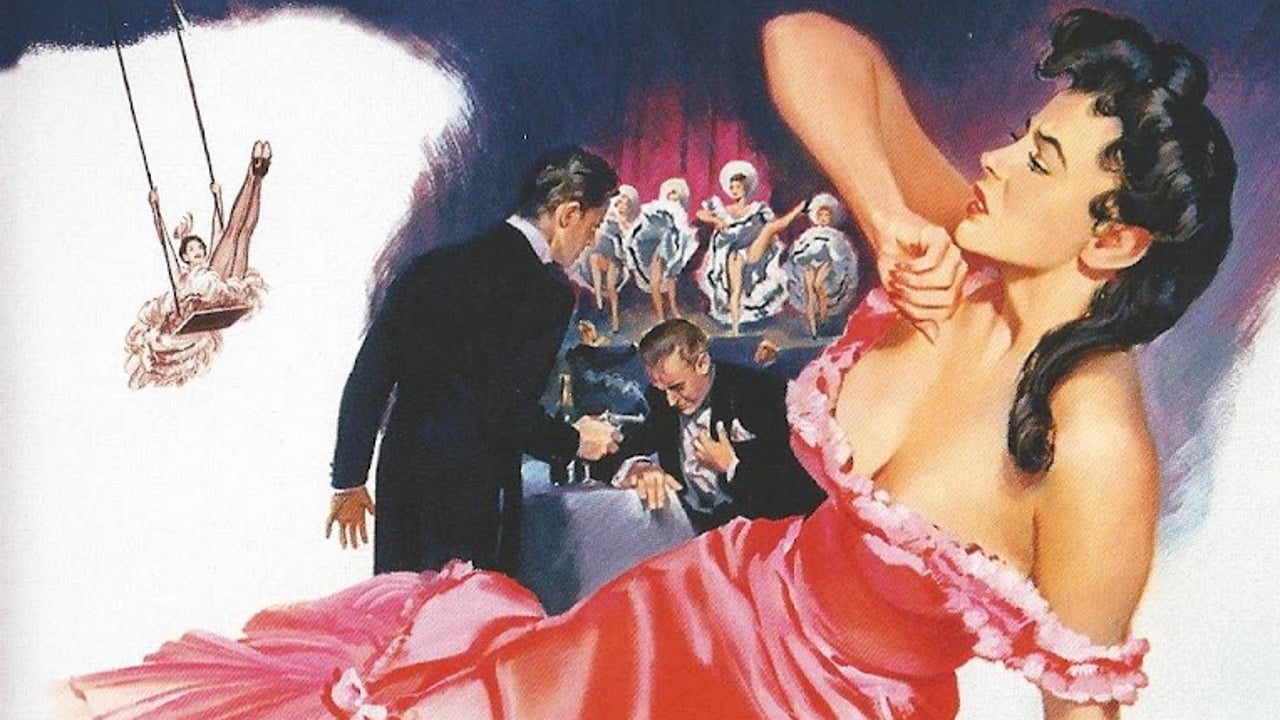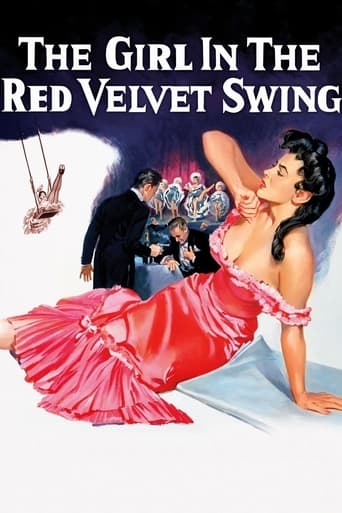

Most undeservingly overhyped movie of all time??
... View MoreExcellent, smart action film.
... View MoreThe film may be flawed, but its message is not.
... View MoreThis is one of the best movies I’ve seen in a very long time. You have to go and see this on the big screen.
... View MoreOn 25th June 1906 Stanford White, one of America's most famous architects, was shot dead in Madison Square Gardens (a building he had designed himself) by a millionaire rail and coal tycoon named Harry Kendall Thaw. Thaw's motive was sexual jealousy; he believed that White was having an affair with his beautiful young wife Evelyn. White certainly had at one time been one of Evelyn's numerous lovers, but their relationship had in all probability ended before her marriage to Thaw. Thaw was tried for murder, but was found not guilty by reason of insanity. What made the crime one of the notorious causes celebres of the Edwardian era, apart from the fame of the victim and the wealth of the perpetrator, was the fact that Evelyn, under her maiden name of Evelyn Nesbit, had been a famous model and actress in her own right, one of America's first "pin-up girls" and an early example of what would today be known as the "celebrity culture". The film relates this story in a somewhat fictionalised form. The main change is to soften the character of Evelyn Nesbit, which is perhaps not surprising as she was still alive in 1955 and even served as a technical adviser on the film. (Thaw had died in 1947). Her relationship with White is kept rather ambiguous; the two are portrayed as having been in love, but not necessarily lovers in the sexual sense. Although White loves Evelyn, he is unable to marry her because he is still fond of his wife Elizabeth and does not want a divorce, so he treats her almost as an adopted daughter, paying for her to attend an exclusive girls' finishing school. The leading role was originally intended for Marilyn Monroe, who turned it down; it eventually went to Joan Collins, who bore a greater physical resemblance to the historical Evelyn Nesbit than did Monroe. After her roles in films like "The Bitch" and television series like "Dynasty", Collins today has gained a reputation for specialising in playing seductive villainesses, but during her Hollywood heyday in the fifties and sixties she was as much at home playing heroines, and here she plays Evelyn as a sweet and naïve young thing bemused by the passions she arouses in men, especially the obsessively jealous Thaw. (Whether the real Evelyn Nesbit was quite as innocent is another matter). Ray Milland bears little physical resemblance to the real Stanford White, who was a burly, red-headed man with a very prominent moustache. By all accounts he was a practised womaniser, with a particular liking for teenaged girls, and probably less kindly and avuncular than the character portrayed here. The film's rather odd title derives from the fact that one of White's sexual fetishes was to have Evelyn, and his other mistresses, perform for him on a red velvet swing at his home. Another change which the film makes to the facts of the real case is that Stanford and Elizabeth are here portrayed as being the same age; in reality she was considerably younger than him. The best acting contribution comes from Farley Granger as the arrogant, self-obsessed and pathologically jealous Thaw. Granger is today perhaps best remembered for the two films he made with Alfred Hitchcock, "Rope" and "Strangers on a Train", and there are certainly similarities between Thaw and Phillip Morgan, the character Granger played in "Rope". Both are spoilt young men, from wealthy, privileged backgrounds and both have an ineradicable sense that their background entitles them to have anything they want. Both are so arrogant that they literally believe that they can get away with murder, Morgan because he believes himself to be intellectually superior to anyone who might try to investigate his crime, Thaw because he believes that his wealth will effectively enable him to buy his acquittal. (He is partially correct in this belief; the verdict of "not guilty by reason of insanity" means that he escapes the death penalty). The film was directed by Richard Fleischer, a versatile director who seemed able to work in virtually any genre, including film noir ("The Armoured Car Robbery"), science fiction ("20,000 Leagues under the Sea", "Fantastic Voyage"), the historical epic ("The Vikings"), and sword-and- sorcery fantasy ("Conan the Barbarian", "Red Sonja"). He did, however, also make a number of films based on real-life murder cases, including this one, "Compulsion" (loosely based upon the Leopold-Loeb case which also inspired "Rope") and "Ten Rillington Place" (based upon the career of the British serial killer John Christie). These three films are very different in terms of their visual style. "Compulsion" was shot in black-and white, influenced by the films noirs in which Fleischer had specialised in the earlier part of his career. "Ten Rillington Place" was filmed in a bleak, washed-out colour with a palette dominated by greys and dull browns and greens, giving a look appropriate to Christie's seedy lifestyle and to the run-down London of the post-war austerity years. "The Girl in the Red Velvet Swing", by contrast, was shot in a much richer, brighter colour, reflecting the glamorous worlds of New York high society and of the turn-of-the-century theatre. In its emphasis on recreating the fashions and styles of the Edwardian era it can be seen as an early example of "heritage cinema". I wouldn't rate "The Girl in the Red Velvet Swing" quite as highly as highly as Ten Rillington Place", possibly Fleischer's finest film with two particularly strong acting performances from Richard Attenborough as Christie and John Hurt as the hapless Timothy Evans. It is, however, a very entertaining account of a "true crime" scandal of sex and violence in high places. 7/10
... View MoreI often wonder where IMDb gets cast and production credits. Evidently not from the studio's Press Book. In the long run, that is undoubtedly an advantage. Many of the cast and behind-the-camera credits for this one are not listed in the Press Book at all, but, on the other hand, IMDb omits one of the most intriguing, namely that Evelyn Nesbit herself was hired as a "consultant" for the movie and was paid $50,000 for her services (which was more money than the film's director received). Miss Nesbit not only gave advice on the script, the decor and the costumes, but on the players. She thoroughly approved the casting of Joan Collins and while she made no mention of Ray Milland or Granger, she did declare that "White was the only man I ever loved. In fact, he was the most wonderful man I ever knew. As for Thaw, he was a poor thing at best. But I guess he couldn't help what he did. He was a mighty peculiar person when I married him and he just got worse and worse. I thought when I married him that he'd snap out if it, but he deteriorated. Too much money spoiled him young. It would have been better if he'd never been born!" Although the movie has its detractors, I found it fascinating. The only thing I didn't really like was Ray Milland's weary performance. He seems to be playing at half-steam. But Granger is superb, and Joan Collins fills Miss Nesbit's shoes most attractively.
... View MoreSet in New York in the early years of the 20th century, a stunning Joan Collins plays the title role, in which there are actually two scenes where she is the girl in the red velvet swing, both of which are fantastic. Both scenes give a lot of credit to the director, cinematographer, set designers, and art director. The film is beautiful to watch throughout, mixing sets from early Broadway stage to crowded fancy New York restaurants. Collins' part as a teenage chorus girl whose beauty is such that she bowls over both Ray Milland who plays a wealthy and well-established New York architect and Farley Granger an heir to a fortune from Pittsburgh, who both throw tons of money her way. What starts off looking like it's going to be a musical comedy actually gets fairly involved and intense, leading to a great and ironic ending.
... View MoreThis is a good example of an over-produced film, much too lengthy (109-min.) and gaudy for the slender material that doesn't engage until the last 10-minutes. I expect TCF saw anti-TV potential in a wide-screen Technicolor treatment of true-life scandal among the rich and famous. The trouble is that neither the acting nor the script is able to carry the needed momentum, despite the wide-screen spectacle. After all, stretching a single theme of forbidden love to a two-hour time slot is challenging even for the best screenplay, which this definitely is not.Then too, the real life Nesbitt was apparently involved in the production, along with wealthy family heirs to White and Thaw in the background, resulting, I expect, in an overly cautious portrayal of events. That's reflected, I think, in Collins' curiously dull portrayal. Logically, I would have expected some change in Nesbitt's demure demeanor over the years, especially after entering the high life. Instead, there's hardly a hint of the high life's affecting her throughout the movie's course. (And we know what an edge actress Collins can bring when called upon.) In fact, the nature of her relationship with White is so sanitized, it's hard to know what to make of it.Ace director Fleischer also appears unengaged with the material, filming it in straightforward, unimaginative style, unlike many of his other projects, e.g. The Narrow Margin (1952). Speaking of B-movie gems like "Margin", I wish the expert budget crews at Columbia or RKO had gotten hold of this material first. After all, hot-blooded romance and cold-blooded murder are prime stuff for B-movie treatment, where reputations and big audience appeal are not so much at stake and risks can be taken. Too bad that what we're left with instead is an under-nourished and over-stretched slice of 50's eye candy.
... View More